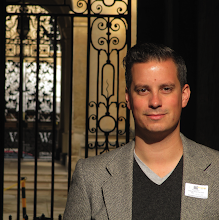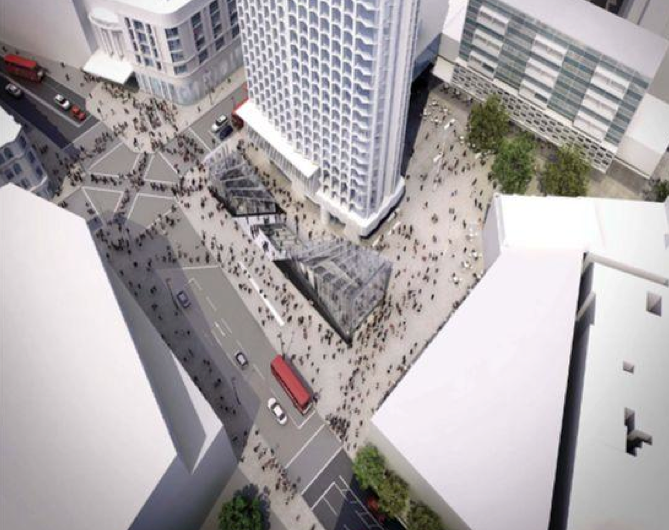Last week I was nominated for a London Cycling Award in the "Best Bike Blog" category - and I wanted to share with you how thrilled I am about this!
The awards - administrated and issued by the London Cycling Campaign - are handed out each year to those making an outstanding contribution to our capital's cycling scene. From "cycling champions" to "best bike project" they are a rare moment of celebration in the campaigning calendar, and I'm delighted to have been nominated.
I've been editing ibikelondon blog continuously since 2009 and in that time have published nearly 500 articles covering everything from the dry (bicycle parking on the East London Line), the comical (how to survive a Skyride), to rallying cries about more serious issues that affect us all; particularly dangerous junctions, poor road design and HGVs.
I'm proud to have contributed to London's Go Dutch and Space4Cycling campaigns, to have helped formulate the thinking behind The Times' Cities Fit For Cycling campaign and to have contributed to the parliamentary Get Britain Cycling report.
And the writing you see online - all of which is done in my own time and at no commercial profit to me - is just the tip of the iceberg, as I attend campaigning meetings and off-line events to gather stories, meet contacts and help with talks and rides. I'm a founding member of the Movement for Liveable London, the Cycling Embassy of Great Britain, have lectured on cycling and cities at Oxford and Westminster University and have even been lucky enough to report on cycling in cities as far away as Barcelona, Nice, Copenhagen and Taipei.
Oh, and I even got invited on to Newsnight, too!
In short, ibikelondon is a real labour of love for me, something that I really enjoy doing but which has grown bigger than I could possibly have imagined when I started out 5 years ago. Subsequently it is really touching to be nominated for a London Cycling Awards and for my efforts to be recognised in this way, I'm very pleased.
The Award winners will be chosen from the short list of nominees by a system of public voting over the following week. Readers can choose their favourites by following this link between now and Tuesday 8th July. It is a real David vs Goliath situation, with ibikelondon in the same category as commercial website Road.CC and professional blogs London Cyclist and Total Women's Cycling but to be in such august company is in itself an honour.
If you feel inclined to vote, I appreciate it. Thank you!
Share |
The awards - administrated and issued by the London Cycling Campaign - are handed out each year to those making an outstanding contribution to our capital's cycling scene. From "cycling champions" to "best bike project" they are a rare moment of celebration in the campaigning calendar, and I'm delighted to have been nominated.
I've been editing ibikelondon blog continuously since 2009 and in that time have published nearly 500 articles covering everything from the dry (bicycle parking on the East London Line), the comical (how to survive a Skyride), to rallying cries about more serious issues that affect us all; particularly dangerous junctions, poor road design and HGVs.
I'm proud to have contributed to London's Go Dutch and Space4Cycling campaigns, to have helped formulate the thinking behind The Times' Cities Fit For Cycling campaign and to have contributed to the parliamentary Get Britain Cycling report.
And the writing you see online - all of which is done in my own time and at no commercial profit to me - is just the tip of the iceberg, as I attend campaigning meetings and off-line events to gather stories, meet contacts and help with talks and rides. I'm a founding member of the Movement for Liveable London, the Cycling Embassy of Great Britain, have lectured on cycling and cities at Oxford and Westminster University and have even been lucky enough to report on cycling in cities as far away as Barcelona, Nice, Copenhagen and Taipei.
Oh, and I even got invited on to Newsnight, too!
In short, ibikelondon is a real labour of love for me, something that I really enjoy doing but which has grown bigger than I could possibly have imagined when I started out 5 years ago. Subsequently it is really touching to be nominated for a London Cycling Awards and for my efforts to be recognised in this way, I'm very pleased.
The Award winners will be chosen from the short list of nominees by a system of public voting over the following week. Readers can choose their favourites by following this link between now and Tuesday 8th July. It is a real David vs Goliath situation, with ibikelondon in the same category as commercial website Road.CC and professional blogs London Cyclist and Total Women's Cycling but to be in such august company is in itself an honour.
If you feel inclined to vote, I appreciate it. Thank you!
Share |

















